ScreenFonts: Brothers, Up In The Air, Invictus, The Lovely Bones, Avatar, Sherlock Holmes
For this instalment of ScreenFonts I am about to do something I haven't done before – I want to reprise the last poster of the previous episode. There's two reasons for this. The first one is the fact that I actually glossed it over rather hastily. As I explained in my reaction to a comment by Jeff "I must admit that by the time I reached the end of this episode I kinda lost interest in the poster for his comment. Instead of adding these additional elements to the previous ScreenFonts and have them get lost, I thought it'd make more sense to simply start this episode by revisiting the movie posters for The Road and do a proper job this time.

Let's first take a quick look at two posters that are quite different from the others. Instead of having Viggo Mortensen and his son as the main motif for the design, both focus literally on the "road" in the title. Because of the absence of any human-made artefact in the teaser poster at the left, it falls short at conveying the post-apocalyptic aspect. This could be any road through the woods in wintertime, and one could be misled into thinking it advertises a thriller or horror movie.
The design at the right is equally obtuse. The image in itself is fine – it clearly reflects the theme of the movie. Inserting the portraits of the family in the top part of the movie title – set in Helvetica Compressed – adds a nice touch. Yet the gigantic Rolling Stone logo at the top overpowers said movie title and suppresses the image, to the point that the poster can easily be confused for an ad or even the cover for the entertainment magazine. It's takes closer inspection to see the Rolling Stone logo is only there to add extra authority to the journalist's quote. Like I said, a very confusing poster.

Back to the main poster, Jeff pretty much hit the nail on the head when he commented: "I was personally disappointed with the poster treatment for [The Road]. The Clarendon type is almost identical to the type treatment used on the cover of the first edition of the novel (in U.S. stores). As for the tag-line, the heavy black stroke makes it look very amateur." Indeed, the Book Cover Archive shows us that the bare bones typographical treatment of Oprah's Book Club version of the Cormac McCarthy novel was literally copied for this version of the poster. The need to put some kind of black shadow behind the tag line and actors' names betrays not enough thought went into the choice and composition of the type.

Sheff on the other hand revealed some interesting new facts. He pointed out the resemblance between another poster for The Road and the main poster for Road To Perdition. Besides sharing half of its movie title, The Road indeed has a very similar poster image. Both fathers stride purposefully, gun in one hand, their towering body shielding their son who walk at their left behind them. The size, position, and angle of the characters on the posters are almost identical, and the lighting is too. Both have the movie title at the bottom. And see – this version does have Trajan, whilst the movie logo for Road To Perdition was designed with very appropriate elegant vintage caps. It is somewhat reminiscent of Rea Irvin's typeface for The New Yorker, which Gert Wiescher reinterpreted as NewYorkerType.

Both posters have intriguing variant designs. The Road comes with a version that has both characters seen from the back, as if they have passed the onlooker and are moving on. Could it be this one is meant to be posted at the exit of the movie theatre? And the Russians apparently were worried that the obscured face of Tom Hanks would diminish the selling power of the poster, so they made his features recognisable.
Personally I think the Armored movie poster is a bit silly. Disregarding the unnatural head strips on the actors trying to look as tough and menacing as they possibly can, the type is kinda weird. In no way do I claim to be an expert in security matters, but I don't think armoured vans nor safes come in brushed steel finish. The added rivets make this movie logo look as if it belongs on the sleeve for a straight to video eighties flick. In an effort to make the type look "badass" they just made it ludicrous …
… which is a shame, because the image for this alternate design is quite good. The photograph shot from a perfectly perpendicular position makes for a surprising geometric image. It reminds me of a beautiful, poetic shot in Six Feet Under – if I'm not mistaken in Episode 12 of the first season – where a corpse is slowly wheeled into the hearse, filmed in the exact same way.
The movie poster for Brothers is a thing of sheer beauty. Every single detail is just right, starting with the perfectly white background sharply delineating the main characters, and the underplayed yet achingly genuine expression and body language of the actors. The ingenious cropping of the picture has Tobey Maguire's head almost literally hit one side of the poster, while Jake Gyllenhaal's melancholious presence emerges from the opposite side.
The "less is more" approach avoids the "less is a bore" pitfall by adding refined graphic static in the mix. The vertical gash in the sepia tone image, which is subtly extended by the dislocated tag line right above it, magistrally visualises the themes in the movie – from the inner conflict in Nathalie Portman, to the growing rivalry between the two brothers and the unhinged psyche of Tobey Maguire. Due to the tense curves in Engravers Gothic the minimalist typography looks ever-so-slightly awkward, and the horizontal fracture with scaled bottom slice in the movie logo reinforces the schizophrenic atmosphere. Even something as minute as adding vertical bars between the main actors' names lifts this design to a higher level of sophistication. This is so good.
I can't decide whether I like the movie poster for Up In The Air or not, as it has as much going for it as against it. For starters I think the quirky symmetry of the image works. The huge airport sign holding the movie title and so on hangs over George Clooney's silhouette like a Sword of Damocles, and both female leads perform a balancing act at the extremities of the tag line. I am less enthusiastic about the integration of the plane into the image. It doesn't look natural; more like a giant photograph stuck to a wall than a realistic looking view through airport windows. Yet the tiny bird in the upper right window is a neat detail that adds a little realism.
The colour scheme is very tasteful, with watery blues nicely complementing the grey, beige, and sepia hues. However it is once again Helvetica, and no matter how well it is set, it is just … there, you know? I can see the connection with signs in airports and such, yet it's not adding anything to the poster. This is the main problem with Helvetica – you can hardly do wrong, but you're seldom right.

And this is the point where we get to that intriguing theory. Apparently I am not alone with my interest in type used on movie posters. You may remember I mentioned at the end last of episode that it seems like Trajan is getting competition from another typeface for making movie posters "feel like Oscar material". Well, a little over a month ago I received a message in my Facebook Inbox from Owen Gjertsen Troy. Together with his wife and fellow RISD graduate Samantha Troy he founded Design des Troy, a San Francisco-based design studio specialised in custom wedding invitations, logo design, publication design, and CD design. In case you were wondering, that's Fling and Vendetta on their home page.
Owen and Samantha are joined by Jessica Pettigrew and Kirsten Finkas on the blog The Experts Agree. The December 18th entry of TypograFriday focuses on a new trend in "movie typecasting", and I wouldn't be surprised if Owen has the scoop on this. Flipping through the local newsweekly in early December he noticed that three presumably Oscar-aiming films – Invictus, The Lovely Bones, and A Single Man – were prominently using Hoefler & Frere-Jones' ubiquitous Gotham.

Owen sees a connection with the electoral campaign of US President Barack Obama.
Used in all caps in its bolder weights in 2009 [Gotham] still carries strong resonances of HOPE and CHANGE and YES WE CAN. Indeed the upward flight of birds in The Lovely Bones poster and the upward looking Damon and serious looking Freeman are from not only the Obama/Hope playbook but also the rising swell of a John Williams score, the slow-mo on a triumphant smile, the whole town breaking into applause, the gleam of hope that this distillation of big Hollywood production dollars into filmic pathos brings home the trophies.
He makes a solid observation in his conclusion:
A few years back, Trajan was still being used for this sort of film. But now it's been relegated to the likes of Hellblazer and The Hills Have Eyes … To strike the right chord of gravitas and respectability in your drama, Gotham is the new go-to. I know a set of three does not exactly a trend make but take my word for it, there'll be more. You heard it here first: Gotham is the Oscar Movie Font.
I think Owen may be onto something. : )
So, besides the type, are those three posters Oscar material? By that I don't mean are the posters stunning designs, but are they appropriate for advertising potential Oscar-winning movies? The poster for Invictus certainly is. The silhouette of Morgan Freeman on a virginal white poster holds an inspirational shot of a sportsman, smiling, and being cheered by an enthusiastic crowd. It's just a shame Matt Damon resembles a plastic action figure – those Photoshop guys should learn when to stop.
The Lovely Bones has a pretty sophisticated poster, with the movie title artfully integrated in the image, partly hidden by the horizon and the tree. Flying leaves morphing into a flock of birds and a running figure provide dynamism and upwards movement, and the colours are subdued but lovely nonetheless. So, yes, Oscar material as well.
My favourite of the three is the poster for A Single Man, a beautiful example of how a specific time period can be interpreted in a modern way. The grain, focus, colours and lens flares in the gorgeous image have the look and feel of photographs of the early sixties, and the black background with simple white capital letters refer to the design style from that time frame. Yet the poster is undeniably contemporary. I think the fact that the movie's director Tom Ford is a leading fashion designer is no stranger to the success of this delightful poster. Oscar material? You betcha.
While the alternate poster is not as good as the one above, it still is an nice design. More importantly, it is infinitely better at depicting a couple lying in bed than the poster for It's Complicated near the end of this post. Brace yourself, it gets ugly.
Did You Hear About the Morgans? Nope, I didn't, and by the looks of this movie poster I don't think I could care less. All I know is the type is set in Ellington, whose chiselled features imply that its designer Michael Harvey is a letter carver of international renown. According to Late Late Show host Craig Ferguson, instead of us paying to see this movie, studios even should pay the audience to go watch it. Yup, I rely on the opinion of middle-aged white talk show hosts for my movie selection; I'm edgy like that. By the way it makes me crack up every time he makes fun of the online generation, and keeps bringing up his distrust for blogs and anything that's written online.
"A book, if you don't know it, is like a blog, but papery."
Frankly, while the main poster is simply daft, the Men Who Stare At Goats Teaser Poster Syndrome: elements in a design that are supposed to interact with each other but are in different planes. See, the buffalo is standing alongside the trajectory of the yellow cab, not in front of it, so the taxi can easily drive past the beast. Pretty silly.
The best proof that type and typography are gradually permeating our collective consciousness is the backlash Avatar generated. Not only from graphic designers, but also from "regular" computer users who are increasingly familiar with fonts. If shortly after the release of the movie you Googled "Avatar" and "Papyrus", or did a Twitter search for those words you were submerged by a deluge of outraged reactions over the use of Papyrus. Even now, almost one and a half month after the movie's release you can still witness the after-effects. For the movie logo on the movie poster the capitals were customised. Comparing the notches in the outlines by several people proved conclusive – see for example the graphic on Aaron Weyenberg's blog. The face was also used in the movie, for subtitling the Na'vi language. So we're talking about two different applications of Papyrus.
I can be brief about the latter: I think Papyrus is a very poor choice for subtitles. I have no scientific proof to back this up, so you'll just have trust me on this. The character shapes are overly affected, with ascenders and descenders that are too long for this purpose. The very large capitals that rest below the baseline only add to the artificial appearance of text set in this overused typeface. So regarding the subtitles, that's a big no-no from me.

The movie logo on the other hand … I fear I won't make myself popular with what I am about to write, and will probably expose myself to ridicule from type lovers/Papyrus haters, but what the heck, this never stopped me before. I don't think there is anything intrinsically wrong with the Avatar movie logo. And frankly I don't follow the reasoning of the haters. Let's review their arguments.
Papyrus is overused | Fair enough, but does that really matter? The fact that a certain typeface is flooding the visual landscape does not make it inherently bad. As Quadibloc pointed out on Typophile "the reason Papyrus is so overused is that there are virtually no other fonts that do what it does. That fact, I think, mitigates things considerably." There simply is too much of it, and you may get bored or irritated by it, but that's where it stops. I personally think Helvetica is overused and cringe almost every time I see it. I added "almost" because I have no problems with it when it is well set and used for a well-defined purpose or within an appropriate context. I can readily set aside my personal dislike and admit certain designs – both vintage and contemporary – look absolutely stunning in Helvetica.Papyrus is ugly | This enters the realm of personal taste which is a very subjective matter, and as such cannot be an argument in a discussion. Not liking the look of a certain typeface does not make it inherently bad neither. Besides the Papyrus haters there are also users that love Papyrus, just like there is a Flickr Group professing its affection for Comic Sans.Papyrus is bad | No, it's not. I can make a much easier case proving why Comic Sans is a bad design than with Papyrus. Technically and aesthetically speaking it's well designed, it is consistent in look and style, it sets and displays properly, so this argument doesn't fly.Papyrus is a default font | Now this is the most ridiculous argument ever. So this movie cost a gazillion dollars, and the typeface they used for the movie title came for free with the OS? Big deal. Last time I checked the monetary value of a typeface has nothing to do with its intrinsic value. Good for them if they saved a couple of bucks on a US$ 300 million budget; it looks fine.The logo should have been custom designed | Now this is really getting ludicrous. I might agree to a certain extent that having a custom typeface for the subtitles would have been nice. It would have visually enhanced the alien aspect of the Na'vi language. But the movie logo? Could it have been done better by a lettering artist? Possibly. Yet they customised existing characters, adding subtle differences in repeating characters to make it look more natural. Countless designers do this, and there never was a problem with it, so why now?
Before I get myself into any more trouble I'd like to conclude that the Avatar movie logo is just fine. I'm not saying it's a stellar design, yet it's an adequate solution, and its organic appearance is appropriate for the environmental message conveyed in the movie. But please don't mind me and continue bashing this thing, as it makes for some very entertaining reads. You won't fool me though.
The custom distressed Clarendon. FontShop has a Fontlist with a large selection of "grunge" faces, subdivided in handy categories for easy reference.
Nine also has distressed type on its movie poster, and it's custom as well, as the repeating N's tell us. At first glance the background elements in the black and white picture make Daniel Day-Lewis look like a cross of Batman and the Joker. The design is far less glamorous than one would expect for a musical, but is uncharacteristically moody. However I like the atmosphere in the image. The red text set in Kabel is so horribly squooshed I can hardly tell if it's the original or the ITC version (I think it's the former). What the hell is wrong with using a condensed typeface? Seems logical to me.
Last episode I was praising the main poster for Women In Trouble, as it succeeded in portraying scantily clad, beautiful women in a fun and respectful way. Sadly the alternate design for Nine fails at this, and makes Fergie, Penélope Cruz, and Kate Hudson look slightly slutty. I find this design a bit too kinky/soft porn-ish for a movie poster, even taking into consideration the theme of the movie. Well, there's some for every taste and every inclination I guess.
It's cliché time again. Another romantic comedy, another movie poster with horizontal divisions and Didot. Agreed, there aren't any actual colour bands in the movie poster for It's Complicated, but they are clearly suggested. Remember the remark I made for the alternate poster for A Simple Man? Now you have to agree this is one hell of a creepy image. By the way – I am in no way an expert, but I have the impression that coloured-in black and white photography is all the rage these days.
And another cliché! Safely accommodating the expectations, the teen comedy Transylmania relies on the usual Big Red Text for its movie poster. For once it's not Gill Sans Ultra Bold, Flyer, Futura Extra Bold, Kabel Ultra, or any other of the usual suspects. The poster uses a true horror font, aptly titled House of Terror, from the classic Monster Fonts collection by House Industries. Rian Hughes of Device Fonts shares their pulp sensibilities, and has also digitised some cracking brush caps in the same vein: Agent of the Uncanny, Appointment with Danger, and Destination Unknown amongst others.
Less "pulp fiction", more "comic book" – and if I dare say so also a little less good – are the monster fonts from comic lettering experts Comicraft, including Carry On Screaming, Dead Mans, Long Underwear, Monster Mash, CC Rugged Rock, Sticky Fingers, … Yet I still think the very best stylised contemporary interpretation of them all is Orgovan Punk, and I'm confident it would've looked just fabulous on this otherwise predictable poster. I suggest you play around with it and see for yourself.
The movie poster for The Imaginarium of Doctor Parnassus is a bit of a mess, really. It is a motley assortment of miscellaneous bits'n'bobs, a bizarre vertical stack of: a leftover frame from Moulin Rouge; a romantic picture of the two leads against a noisy backdrop; a three-dimensional curved movie title set in Guardi; a kitsch gilded mirror/gate emitting sun rays, revealing a colourful imaginary world, and flanked by Professor Dumbledore and The Man In Black; a tiled floor in botched perspective (diagonals should be straight, not curved); and a gallery with miniature portraits of the main cast. There is no clear narrative to help guide the eye through the design. The lack of focus point and calm areas make for an aimless poster that suffers from horror vacui. Furthermore this is an example where the symmetry decidedly works against the design, making it fall flat on its arse. A missed opportunity? I would think so.
And – surprise – just like last episode we end this one with a movie poster set in Clarendon. Sherlock Holmes is outfitted with a colourful, fun design worthy of a leftfield blockbuster. It proves that a busy background doesn't necessarily have to amount to a messy poster, unlike the previous one. By making the image elements surrounding Sherlock Holmes and Doctor Watson almost monochrome blue and highlighting their faces, the image comes across as clear and uncluttered, with an interesting background texture. Again I won't dwell on this poster any longer, because – who knows – maybe a reader comment will reveal new elements and I'll know how to start the next episode. ; )

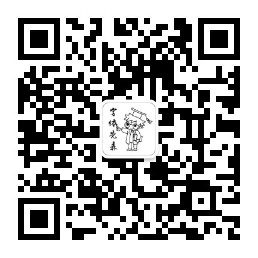




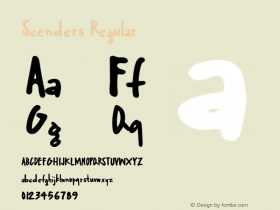













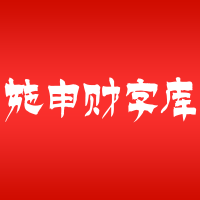
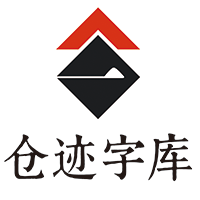

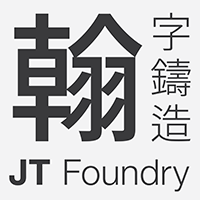
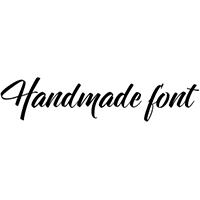
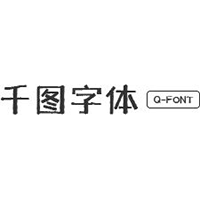
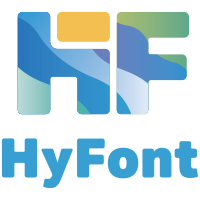
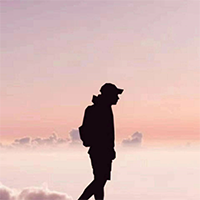

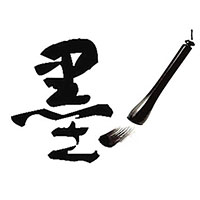





 闽公网安备35010202000240号
闽公网安备35010202000240号